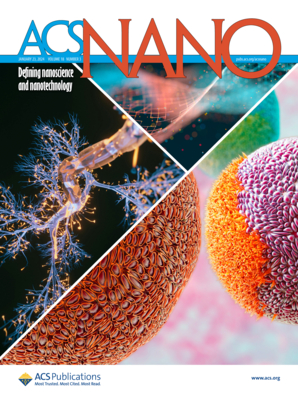Realizing Dual-Mode Zinc-Ion Storage of Generic Vanadium-Based Cathodes via Organic Molecule Intercalation
IF 15.8
1区 材料科学
Q1 CHEMISTRY, MULTIDISCIPLINARY
引用次数: 0
Abstract
Intercalation engineering is a promising strategy to promote zinc-ion storage of layered cathodes; however, is impeded by the complex fabrication routes and inert electrochemical behaviors of intercalators. Herein, an organic imidazole intercalation strategy is proposed, where V2O5 and NH4V3O8 (NVO) model materials are adopted to verify the feasibility of the imidazole intercalator in improving the zinc storage capabilities of vanadium-based cathodes. The intercalated imidazole molecules could not only expand interlayer spacing and strengthen structural stability by serving as extra “pillars” but also provide extra coordination sites for zinc storage via the coordination reaction between Zn2+ and the C═N group. This gives rise to a dual-mode ion storage mechanism and favorable electrochemical performances. As a result, imidazole-intercalated V2O5 delivers a capacity of 179.9 mAh g–1 after 5000 cycles at 20 A g–1, while the imidazole-intercalated NVO harvests a high capacity output of 170.2 mAh g–1 after 700 cycles at 2 A g–1. This work is anticipated to boost the application potentials of vanadium-based cathodes in aqueous zinc-ion batteries.

通过有机分子互嵌实现通用钒基阴极的锌离子双模式存储
插层工程是促进层状阴极锌离子存储的一种前景广阔的策略;然而,由于复杂的制造路线和插层剂的惰性电化学行为,这一策略受到了阻碍。本文提出了一种有机咪唑插层策略,采用 V2O5 和 NH4V3O8(NVO)模型材料来验证咪唑插层剂在提高钒基阴极锌存储能力方面的可行性。插层的咪唑分子不仅可以作为额外的 "支柱 "扩大层间间距并增强结构稳定性,还可以通过 Zn2+ 与 C═N 基团之间的配位反应为锌储存提供额外的配位位点。这就产生了一种双模式离子存储机制和良好的电化学性能。因此,在 20 A g-1 的条件下循环 5000 次后,咪唑夹杂的 V2O5 可输出 179.9 mAh g-1 的容量;而在 2 A g-1 的条件下循环 700 次后,咪唑夹杂的 NVO 可输出 170.2 mAh g-1 的高容量。这项工作有望提高钒基阴极在锌离子水电池中的应用潜力。
本文章由计算机程序翻译,如有差异,请以英文原文为准。
求助全文
约1分钟内获得全文
求助全文
来源期刊

ACS Nano
工程技术-材料科学:综合
CiteScore
26.00
自引率
4.10%
发文量
1627
审稿时长
1.7 months
期刊介绍:
ACS Nano, published monthly, serves as an international forum for comprehensive articles on nanoscience and nanotechnology research at the intersections of chemistry, biology, materials science, physics, and engineering. The journal fosters communication among scientists in these communities, facilitating collaboration, new research opportunities, and advancements through discoveries. ACS Nano covers synthesis, assembly, characterization, theory, and simulation of nanostructures, nanobiotechnology, nanofabrication, methods and tools for nanoscience and nanotechnology, and self- and directed-assembly. Alongside original research articles, it offers thorough reviews, perspectives on cutting-edge research, and discussions envisioning the future of nanoscience and nanotechnology.
 求助内容:
求助内容: 应助结果提醒方式:
应助结果提醒方式:


